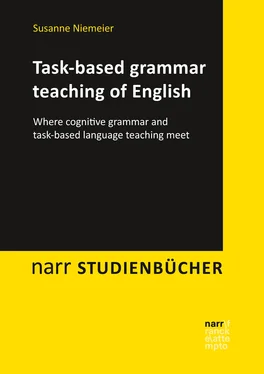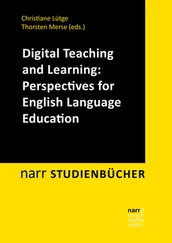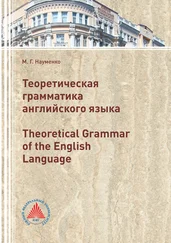Susanne Niemeier
Task-based grammar teaching of English
Where cognitive grammar and task-based language teaching meet
A. Francke Verlag Tübingen
[bad img format]
© 2018 • Narr Francke Attempto Verlag GmbH + Co. KG
Dischingerweg 5 • D-72070 Tübingen
www.francke.de• info@francke.de
Das Werk einschließlich aller seiner Teile ist urheberrechtlich geschützt. Jede Verwertung außerhalb der engen Grenzen des Urheberrechtsgesetzes ist ohne Zustimmung des Verlages unzulässig und strafbar. Das gilt insbesondere für Vervielfältigungen, Übersetzungen, Mikroverfilmungen und die Einspeicherung und Verarbeitung in elektronischen Systemen.
E-Book-Produktion: pagina GmbH, Tübingen
ePub-ISBN 978-3-8233-0035-9
Dedicated to my children Daria and Niclas – and to all my students in module 5.3 –
Over the past two decades, task-based language teaching (TBLT) has been introduced quite successfully into foreign language teaching methodology in wide parts of the world and a sizable number of current and especially future foreign language teachers have become acquainted with this approach during their studies as well as during diverse internships and trainings-on-the-job. However, task-based teaching has not yet found a solid way into foreign language classrooms. Textbooks do not integrate this approach, nor do curricula, as task-based teaching is seen as being partly incompatible with current views on didactic progression. This situation is understandable insofar as task-based language teaching does not – and does not want to – follow the rigid routine of a traditional foreign language textbook. This may be seen as a disadvantage by those teachers who have learned to rely exclusively on a text book series, but for teachers with a more creative mindset the integration of task-based teaching bears many advantages, which outweigh the disadvantage just mentioned, as it allows the teachers (as well as their learners) a lot more freedom to deal with everyday situations and current issues, which is usually perceived as immensely motivating by both teachers and learners alike.
Task-based language teaching stands in the tradition of the multitude of available communicative approaches, which is the reason why it mainly focuses on communication. Fostering communicative skills is certainly far from being a bad idea, but at the same time an exclusive focus on communication may frequently come at the expense of form. Many task-based language classrooms (as well as a sizable part of the task-based language teaching literature) therefore largely avoid grammar teaching, as the concepts of ‘grammar teaching’ in the teachers’ minds are generally connected to something negative, something that “has to be done” but is not necessarily fun. This rather negative attitude towards grammar is observable in many teachers and teacher trainees, who transport it subconsciously – and probably unwillingly – to their learners.
Yet, how can grammar be seen as fun or even as interesting when not even the teachers like it? Such a view of grammar is presumably still heavily influenced by the grammar drills and/or PPP methods (“presentation, practice, production”) that the teachers have encountered in their own school, university or internship days, where grammar was presented as a set of abstract structures with rules and exceptions which had to be learned by heart, and where grammar was not necessarily related to meaning. However, today, as CELCE-MURCIA (2001: 466) correctly claims, “grammar can no longer be viewed as a central, autonomous system to be taught and learned independent of meaning, social function and discourse structure”.
This book even goes a step further because it argues that grammar is as meaningful as lexis (just in a more abstract way) and that teaching grammar is therefore at the same time teaching meaning. This perspective is owing to the fast-growing body of research in theoretical cognitive grammar and in applied cognitive grammar, an approach which is seen as usage-based, i.e., as a descriptive and not a prescriptive way of looking at grammar in usage events, and which has already managed to develop meaning-based explanations of various grammatical phenomena and has empirically proven their effectiveness (although hardly ever in task-based classrooms). According to ACHARD/NIEMEIER (2004: 7), applied cognitive grammar is a good starting point for grammar instruction, “because the kinds of generalizations it posits to describe linguistic organisation can easily be made explicit, and thus incorporated into classroom practices”.
As grammar will definitely be an ever-present ingredient in any foreign language classroom, grammar teaching will always be a necessity. What will hopefully change is the perspective that teachers have concerning the concept of ‘grammar’, no longer seeing it as a necessary evil but seeing it as what it really is, namely a tool in the learners’ hands which enables them to say exactly what they want to say, thus contributing to and sometimes even establishing the meanings of the utterances the learners intend to make. Only if learners know how to flexibly use this tool in diverse situations will they be able to communicate efficiently.
This idea is quite close to PENNINGTON’s view, who argues that “grammar is a process of choosing forms and constructing language to respond to communicative demands, it essentially involves the learner’s creative response to context and circumstance” (1995: vii). If such a functional concept of grammar is then coupled with insights from cognitive grammar, which presents grammatical phenomena as bearing meaning and as the language users’ deliberate choices of construal and not just – as in traditional views on grammar – as prescriptive and rule-governed ways of using the language, learners have the chance to stop seeing grammar as a straightjacket and to start seeing it as the tool it is, which should also enable them to use the foreign language creatively and not just reproductively. This is certainly easier the more advanced a learner is, but also less advanced learners can use language creatively, although with certain restrictions, as of course their linguistic repertoire is smaller than that of more advanced learners. Using language creatively will also benefit an outside-of-the-classroom use of the foreign language, as a creative use of language is exactly what happens in ‘real’ communication, which is quite different from the pseudo-communication that can be found in the majority of more conventional foreign language classrooms.
According to ALLWRIGHT/HANKS (2009: 51), task-based language teaching “puts learners in an unconventional and perhaps unusually proactive relationship to their classroom learning. They have more room to show seriousness of purpose, some capacity for decision-making and space to be unique”, an important quote which already mentions several crucial aspects of this approach. Task-based language teaching can be seen as an action-oriented approach, which can be enhanced by integrating grammar teaching in a non-explicit way, i.e., “by the backdoor”, while the learners may not even notice that what they are learning IS indeed grammar. They will be involved in situations that they may, at least to a certain extent, also encounter outside their classrooms and they are given communicative tasks they are to work on and solve, usually with a partner or in small groups.
These situations and tasks have to be carefully chosen and developed by the teacher so that in order to fulfil a task the learners need to use a specific grammatical phenomenon. In this way, not only the communicative topic is foregrounded in the lesson, as is usual in task-based classrooms, but the lesson focus is instead two-pronged, as a grammatical topic goes hand-in-hand with the communicative topic. What teachers need to invest for preparing such lessons is especially their creativity, as they have to come up with communicative situations which more or less force the learners to use a specific grammatical structure and which additionally cater to different learner types. This book suggests to use WILLIS’ task cycle in a modified way (cf. WILLIS 1996). During the pre-task the teacher already uses the grammatical phenomenon in question but does not yet expect the learners to use it, while during the task itself the structure may and should already be used by the learners. Only after the learners have presented their task outcomes is the grammatical structure in question explicitly focussed upon. In other words: in this book, the task-based approach is enhanced and coupled with insights into (cognitive) grammar, and these two approaches jointly become a very useful tool for the foreign language classroom.
Читать дальше












